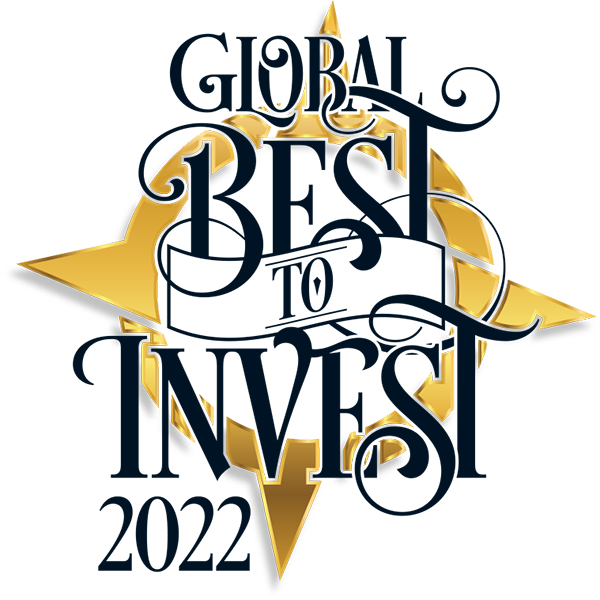The 14th annual Global Best to Invest rankings showcase the top countries and metro areas in terms of their outlook for corporate investment. This year’s edition is based on an updated index modified from past years in order to infuse the rankings with relevant sources of fresh data.
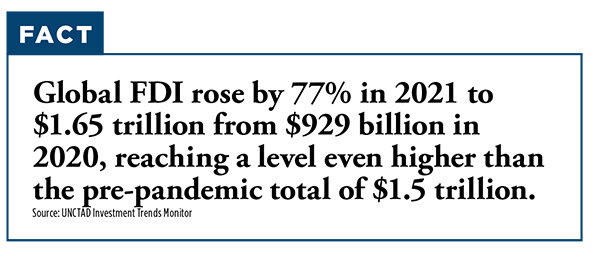
First, we present our country rankings by five world regions — in cumulative and per-capita terms — based on the following sources:
- Conway Data Projects Data 2017-2021
- Milken Institute Global Opportunity Index 2021 (business perception rank and overall rank)
- UN Development Program Human Development Index
- IMD World Competitiveness Rankings
- OECD Inward FDI 2020 (FDI)
- Frontier Tech Readiness Index 2021(UNCTAD)
Citations feature names of relevant national investment promotion agencies (IPAs).
We also list the Global Top 10 Countries Overall (where this year Ireland has moved into the top five, bumping Australia to No. 6) and Global Top 10 Countries Per Capita, led for the second year in a row by the U.S., Ireland, Canada, Australia and the UK in that order.
Next come the Global Best to Invest Top Metro Areas, presented with their respective regional and local economic development organizations (or the home country’s IPA as a proxy). This year’s rankings are based on an index derived from the following three sources:
- Conway Data Projects Data 2017-2021
- Kearney Global Cities Report 2021
- Global Startup Ecosystem Report 2021 (Startup Genome)
Two notes about these metro-area rankings:
- U.S. and Canadian metros are not included, as they are recognized in other Site Selection rankings. The Global Best to Invest rankings are focused on the proverbial “rest of the whole world.”
- These rankings are necessarily based on data collected prior to Russia’s unprovoked attack on Ukraine. As such, we’ve chosen to place asterisks where Russia and Moscow appear in the rankings, and insert the next-ranking country and metro — in this case Estonia and Budapest, respectively.
Reflections and Resonance
The data behind these rankings and a number of recent reports independent of these rankings offer food for thought. Among the conclusions to be wrought from the Top 10 countries overall and per capita is a decided preference for city-states, Scandinavia and the Benelux region. As for those looking to North America, when SelectUSA convenes its annual investment summit in Maryland this summer, it will have reasons to crow even as the U.S. Department of Commerce and its 13 constituent agencies endeavor to improve the business climate.
Delivering the Ogden Memorial Lecture on International Affairs at Brown University in her home state of Rhode Island in March, U.S. Commerce Secretary Gina Raimondo said, “For America to be competitive in the 21st century, we need to be committed to making the investments required to grow our economy. And growth includes things like investing in new technologies, supporting research and development, and revamping worker training so that we are training Americans to do high quality jobs that are available where they live.”
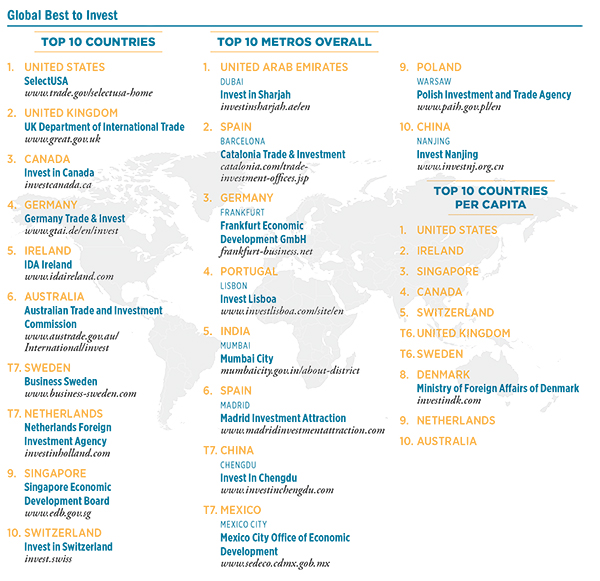
The one area where the U.S. falls short is manufacturing, she said, a sector needed for long-term growth but where nearly 9 million jobs have vanished over the past three decades. “America has been great at inventing breakthrough ideas but when it comes to manufacturing them here, we fall short. Here are the problems with that approach: It is the manufacturing sector that is going to create high-wage jobs for workers without college degrees. I would argue much of the divisiveness in politics stems from this economic insecurity. And the more we rely on other countries to make things for us, the more vulnerable we become to supply chain disruptions like we have seen over the past two years.”
Corroboration & Insight
Indices and reports from such reputable sources as Milken Institute, Kearney and the International Monetary Fund add further dimension — and in some cases corroborate — our Global Best to Invest findings.
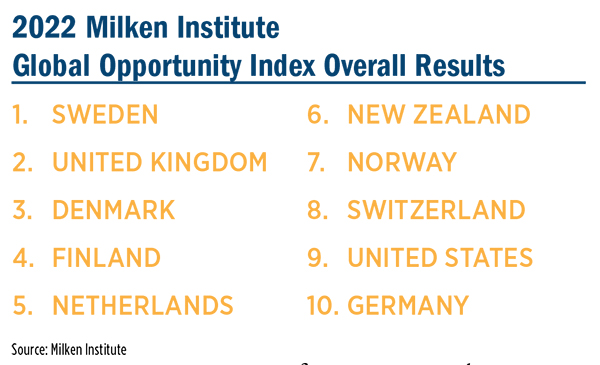
Released in January, Milken Institute’s Global Opportunity Index is one part of our own index. It evaluates 126 countries across seven geographic regions and 100 variables to measure their potential attractiveness to foreign investors. Among key findings this year:
- Sweden maintained its No. 1 rank from 2021 as the country with the most potential to attract foreign investment, followed by the UK at No. 2 and Denmark at No. 3.
- Malaysia, Thailand, and Indonesia took the top spots in emerging Southeast Asia. Malaysia received the highest ranking in the region due to its strong performance across all categories measured. Vietnam and the Philippines rounded out the top five countries in emerging Southeast Asia, in that order.
- “New this year, the Global Opportunity Index added seven environmental, social, and governance (ESG) variables, including CO2 emissions and the proportion of women in government positions,” the report said. “These variables have been included to reflect the growing appetite of investors to incorporate ESG data into business decisions.”
Those same ESG variables are present in the 2022 FDI Confidence Index released by Kearney in early April and grimly titled “Optimism Dashed” to highlight the contrast between high hopes at this year’s outset (when the survey was being completed) “and the reality of the enduring tragedy in Ukraine.”
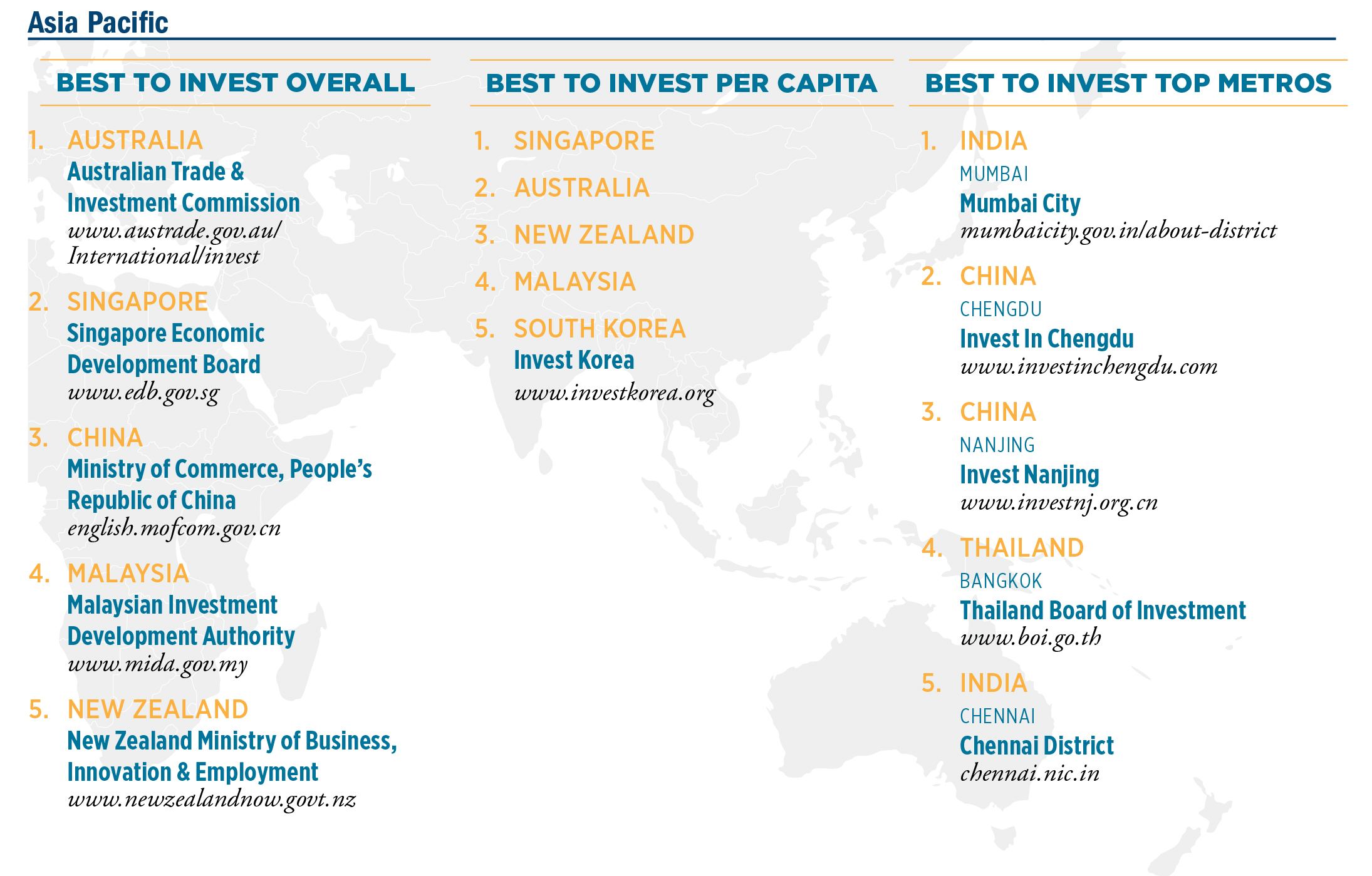
Some of the top 25 countries in Kearney’s Index appear in Site Selection’s rankings and some do not. While a few countries dropped a spot or two from last year’s Index, the biggest upward movers were China (from No. 12 to No. 10) and South Korea, from No. 21 to No. 16. “Investor enthusiasm for South Korea may have been fueled by strong statements of support for growing trade and investment from both presidential candidates as the country prepared for its election in early March 2022,” Kearney reported.
![]()
Here are some other highlights from the Kearney report:
- More than three-quarters (76%) of surveyed business leaders said they were planning to increase their FDI in the next three years — up from 67% the year prior. “Further, 83% cited FDI as becoming more important for their corporate profitability and competitiveness in the next three years, including 50% of investors based in the Americas who said FDI would become significantly more important,” says the Index. “Similarly, investor perspectives on the outlook for the global economy were improving, with optimism higher than pessimism among nearly two-thirds of investors (63%) and highest in the Americas, at 69%.
- Of the top 10 markets in the Index this year, nine were in the top 10 last year, and each of these nine is a developed market.
- “The overall composition of the Index is largely unchanged from last year, with one exception: Qatar makes the list for the first time since the Index was founded in 1998, displacing Finland from the top 25.” The Index speculates that Qatar likely benefited from “investor enthusiasm about the country hosting the 2022 FIFA World Cup, the first Arab country ever to do so.”
- “Many of the countries at the top of this year’s Index also score highly on Transparency International’s Corruption Perceptions Index — namely Germany, Canada, Japan, and the United Kingdom, among others. Similarly, the top five countries on the World Intellectual Property Organization’s 2021 Global Innovation Index are Switzerland, Sweden, the United States, United Kingdom, and South Korea. Each of these countries rank highly and saw their scores improve in our 2022 FDI Confidence Index.”
- “Beyond higher commodity prices and increased geopolitical risk, investors point to a ‘more restrictive business regulatory environment in an emerging market’ as a key development in 2022.” Regulatory crackdowns in China and Mexico’s shutdown of private refined-product imports to benefit state-owned Pemex are among the developments noted by Kearney.
- “A striking 94% of investors say their companies have already developed a strategy to achieve their ESG commitments, 89% view their company’s ESG commitments as a source of competitive advantage, and 73% believe their ESG commitments became stronger over the past three years … Clearly, the pandemic has served as a catalyst for investors—as well as business and consumers—to think more about the challenges impacting the planet.”
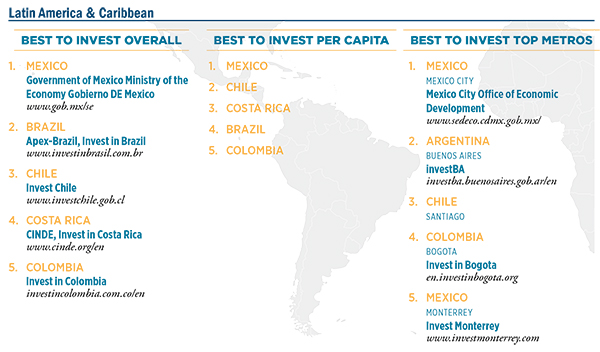
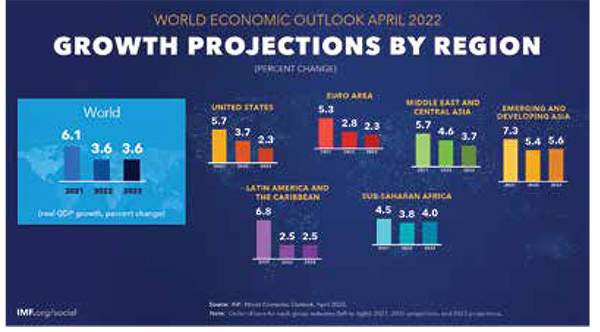
For more on what corporations and territories are doing to promulgate those ESG goals, watch for the 2022 Site Selection Sustainability Rankings in the July issue.

